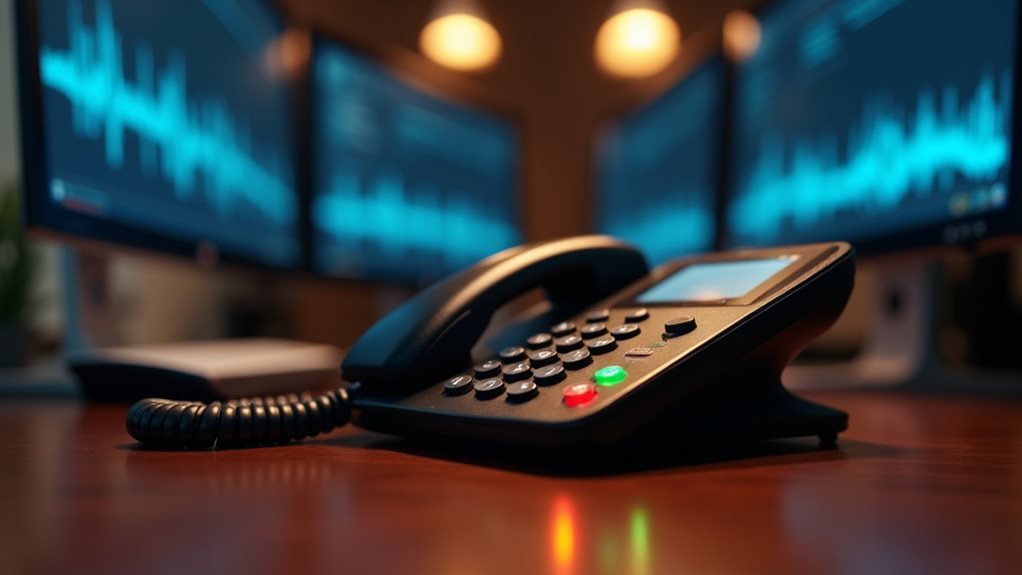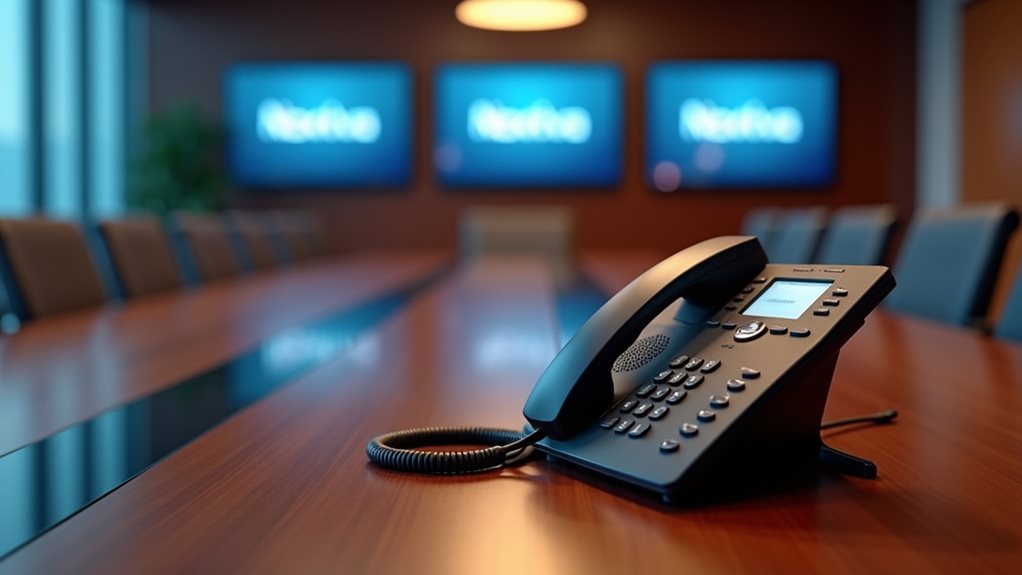No, Nextiva doesn’t automatically record your calls by default. You’ll need to manually enable call recording through your admin dashboard, where you can customize settings for specific users, departments, or call types. You can choose to record inbound calls, outbound calls, or both, depending on your business needs. The platform prioritizes user privacy and control over communications, guaranteeing you decide what gets recorded. Understanding these settings and compliance requirements will help you maximize this powerful feature.
Nextiva’s Default Call Recording Settings
When you first set up your Nextiva phone system, call recording isn’t automatically enabled by default. This design choice reflects Nextiva’s commitment to user privacy, guaranteeing you maintain control over your communications from day one.
You’ll need to manually activate recording features through your admin dashboard, which means you’re never caught off-guard by unexpected recordings.
This approach puts you in the driver’s seat, allowing you to customize recording settings based on your specific business needs. Among Nextiva features, call recording stands out as particularly flexible—you can enable it for specific users, departments, or call types.
You control exactly who records calls—whether specific team members, entire departments, or particular conversation types.
The system respects your privacy preferences while giving you access to powerful recording capabilities when you need them. You’re part of a community that values both functionality and discretion.
This manual activation process ensures that your business maintains cost-effective communication while still having the option to implement advanced features when needed.
How to Enable Call Recording on Nextiva
Since you understand Nextiva’s privacy-first approach, you’ll find enabling call recording straightforward once you’re ready to activate this feature.
Your path begins in the admin portal, where you’ll maneuver to the call recording section within your user settings. Here’s where your control truly shines—you can customize recording preferences for individual users or entire departments based on your organization’s needs.
The process involves selecting which calls to record, whether inbound, outbound, or both. You’ll also configure storage duration and access permissions, making sure your team stays compliant with industry regulations.
Call recording pairs perfectly with other advanced features like auto-attendants and call queues to create a comprehensive communication solution that enhances customer service while maintaining detailed records for quality assurance.
Types of Call Recording Options Available

Although Nextiva doesn’t offer built-in call recording features, you’ve got several third-party solutions that’ll integrate seamlessly with your business communications setup.
You can choose from cloud-based recording platforms, hardware solutions, or software applications that connect directly to your phone system. These options typically provide automatic recording, selective recording based on specific criteria, or manual activation when needed.
Understanding call recording benefits helps you make informed decisions—you’ll improve customer service quality, guarantee compliance with regulations, and create valuable training resources for your team.
However, you’ll also face call recording challenges including storage costs, legal compliance requirements, and potential privacy concerns.
Each solution offers different features, so you’ll want to evaluate which option best matches your company’s specific needs and budget constraints. Many of these recording solutions also integrate with CRM systems to provide comprehensive customer interaction tracking and enhanced business communication management.
Storage and Access of Recorded Calls
After implementing a third-party call recording solution, you’ll need to carefully consider where your recorded conversations will be stored and how your team can access them when needed.
Most providers offer cloud-based call storage, which gives you the flexibility to access recordings from anywhere while guaranteeing they’re backed up securely.
You’ll want to establish clear access permissions, determining which team members can listen to, download, or manage specific recordings. Some solutions allow you to set role-based permissions, so managers can access their team’s calls while keeping sensitive conversations restricted.
Consider your compliance requirements too—certain industries need recordings stored for specific timeframes.
Cloud-based communication allows for flexibility while reducing operational expenses and enhancing your team’s ability to collaborate effectively across different locations.
Smart call storage management keeps your team organized and your business protected.
Compliance and Legal Considerations for Call Recording

While recording calls can provide valuable insights for your business, maneuvering the legal terrain requires careful attention to both federal and state regulations.
You’re part of a community that values compliance, and understanding these legal implications protects both your organization and customers. Federal law typically requires one-party consent, meaning you can record calls where you’re a participant. However, some states demand two-party consent, creating privacy concerns that you must address.
Understanding federal one-party consent versus state two-party consent requirements protects your organization while addressing essential customer privacy concerns.
You’ll need to implement proper notification procedures, clearly informing callers about recording practices.
Consider consulting legal counsel to guarantee your recording policies align with applicable laws in your operating jurisdictions. Documentation of consent becomes essential evidence of compliance. Prioritizing compliance promotes ethical business conduct and helps avoid penalties that could result from regulatory violations.
Final Thoughts
You’ve got solid call recording options with Nextiva, whether you’re handling customer service, training staff, or meeting compliance requirements. Remember to check your local laws before recording, enable the features that match your business needs, and take advantage of the cloud storage for easy access. With proper setup and legal awareness, you’ll transform your phone system into a powerful tool for improving service quality and protecting your business interests.

